- News
- Reviews
- Bikes
- Components
- Bar tape & grips
- Bottom brackets
- Brake & gear cables
- Brake & STI levers
- Brake pads & spares
- Brakes
- Cassettes & freewheels
- Chains
- Chainsets & chainrings
- Derailleurs - front
- Derailleurs - rear
- Forks
- Gear levers & shifters
- Groupsets
- Handlebars & extensions
- Headsets
- Hubs
- Inner tubes
- Pedals
- Quick releases & skewers
- Saddles
- Seatposts
- Stems
- Wheels
- Tyres
- Tubeless valves
- Accessories
- Accessories - misc
- Computer mounts
- Bags
- Bar ends
- Bike bags & cases
- Bottle cages
- Bottles
- Cameras
- Car racks
- Child seats
- Computers
- Glasses
- GPS units
- Helmets
- Lights - front
- Lights - rear
- Lights - sets
- Locks
- Mirrors
- Mudguards
- Racks
- Pumps & CO2 inflators
- Puncture kits
- Reflectives
- Smart watches
- Stands and racks
- Trailers
- Clothing
- Health, fitness and nutrition
- Tools and workshop
- Miscellaneous
- Buyers Guides
- Features
- Forum
- Recommends
- Podcast
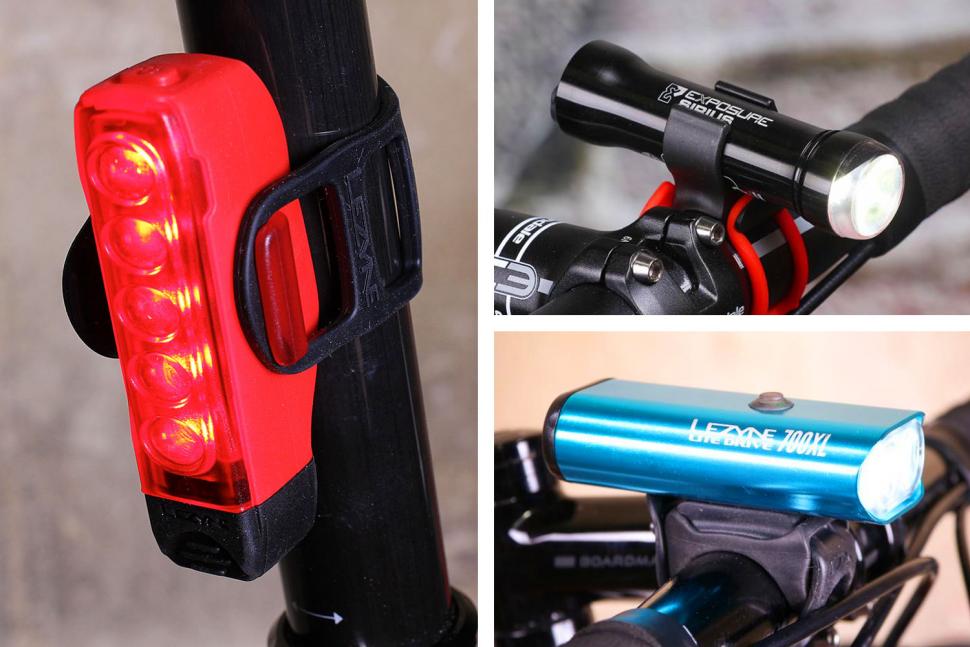 Should cyclists use daytime running lights Sept 2018
Should cyclists use daytime running lights Sept 2018Should cyclists use daytime running lights? Plus the best front and rear daytime cycling lights
You need front and rear lights for cycling in the dark, but do you also need to use lights in the daytime? We look at the argument for using lights during the daytime and round up a bunch of front and rear lights to consider if you do want to increase your visibility.
The best daytime running lights
- Lezyne Strip Drive Front — £29.49
- Magicshine Seemee 30 Combo — £24.99
- Giant Recon TL 200 rear light — £29.04
- Exposure Link Daybright — £55.96
- Blackburn DayBlazer 1100 — £55.99
- See.Sense Icon 2 rear light — £79.99
- Exposure Lights TraceR DayBright — £39.60
- Exposure Lights Sirius DayBright — £75
- Lezyne Strip Drive Pro 300 rear light — £52
- Lezyne Lite Drive 1000XL — £59.49
- Specialized Flux 900 Headlight — £69.99
- Bontrager Flare R City — £24
- Moon Comet-X front bike light — £15.75
It may not have escaped your attention that all new cars sold in the UK legally have to have daytime front lights. So should cyclists also be looking to boost their visibility when cycling in the daytime with front and rear lights? In a recent survey of 500 road.cc readers on Twitter, 52% said they do want daytime lights. It perhaps wasn't the result we were expecting.
Read more: The best front lights for cycling — beam comparison plus how-to-choose guide
To meet this demand, there are a growing number of bike brands marketing lights with daytime running modes, but what does this actually mean and are they any different to lights designed for nighttime cycling?
Exposure Lights has added a new Day Bright mode to its front and rear lights this winter. And it is more than just a flashing mode says Exposure’s Mark Swift. “The DayBright pulse pattern is the most noticeable to ensure it is recognised at distance on rural roads and also enable the light to cut through the noise of the urban town or city traffic and road distractions within daylight hours," he says.
“As the pulse pattern is not regular, once seen DayBright stays highlighted by the brain's receivers and ensures the cyclist is noticed,” adds Mark.
Why would a cyclist want to use lights during the daytime? Surely there’s no need when it’s light?
“Why not!” says Specialized’s William Watt. “Beyond smart responsible riding, visibility on the road is quite simply the most important investment a rider can make in their safety, particularly in a congested urban environment where every road user has a multitude of distractions. Daytime lights give the rider that extra layer of visibility on the road, particularly for that notorious black spot on the near side of traffic.”
It's not always bright and sunny during a typical UK winter day though. It’s often murky, drab and almost dark. Daytime lights can be used in these conditions says Exposure's Mark to help make cyclists stand out in changing light conditions and when “cycling in cities between building or country road in and out of tree cover where the sun cuts through the gaps but is then eclipsed by an obstacle the drivers eyes can sometimes not adjust fast enough. DayBright ensures the cyclist is spotted.”
It’s a stance that is backed up by See.Sense, a company that launched an intelligent daylight back in 2013 and every light since has had a daytime focus. “Daylight visibility has been really important to us right from the start,” the company tells road.cc. “When you consider that 80% of cycling accidents happen during the day, attracting attention to other road users as early as possible during these times is really quite crucial. Think about modern cars, they have their lights running almost any time you see them on the road. Why shouldn't it be the same, if not even more important for cyclists?”
That 80% figure that See.Sense refers to is based on evidence compiled by ROAP and you can read more facts and figures about the number of cyclists injured or killed in accidents here.
The argument for using daytime lights is starting to gather pace, but has anyone actually carried out a detailed survey to assess the impact of cyclists running daytime lights? Handily, just such a survey exists. It was conducted in Denmark in 2004/05 with 3,845 cyclists and concluded that those cyclists with permanent running lights recorded a 19% lower incident rate than a control group not using lights.
“The study shows that use of permanent bicycle running lights reduces the occurrence of multiparty accidents involving cyclists significantly,” the controlled experiment concluded. You can read that paper here.
So should we all start using daytime lights then? See.Sense recommends using flashing lights to help attract attention sooner. “When you have lights that flash brightly from both front and rear can help alert drivers sooner than a solid light, reducing risks out on the road,” the company tell us.
13 front and rear daytime lights
If you’re interested in daytime lights, here are a selection currently available in bike shops. There are loads more lights to consider in this buyers guide and don’t forget the beam comparison engine if you’re shopping for lights as well.
Lezyne Strip Drive Front — £29.49
The Lezyne Strip Drive 400 has been updated with a bright and really eye-catching day time flash, commendable battery life and faster charging. As with the old model, it's also fairly light, easy to operate, has loads of functions and is waterproof too. It's more of a be-seen rather than seeing light, though.
Read our review of the Lezyne Strip Drive Front
Magicshine Seemee 30 Combo — £24.99
The Magicshine Seemee 30 Combo is a set of 30 lumen LED lights aiming to get you seen. The slim profile means they easily attach to seat posts, seat stays, forks or handlebars, and features such as infrared ambient light sensors are rarely found at this price. They're easy to use, stuffed with useful features and very visible around town.
Read our review of the Magicshine Seemee 30 Combo
Giant Recon TL 200 rear light — £29.04
Giant's Recon TL 200 is an excellent rear light, offering lots of brightness, useful modes and decent run-times.
The Recon TL 200 is a bigger and brighter version of the TL 100. Which you choose comes down to personal preference, but for the extra tenner the 200 gets our vote for the extra brightness and run-time it offers.
Read our review of the Giant Recon TL 200
Exposure Link Daybright — £55.96
The Exposure Link Daybright is a secondary helmet light that adds 360-degree visibility and is great for being seen in heavy traffic. Designed and made in the UK, build quality is exceptional, it's very tough and run-times are reasonable bearing in mind its size and two LEDs.
Read our review of the Exposure Link Daybright
Blackburn DayBlazer 1100 — £55.99
The Blackburn Dayblazer 1100 front light is the biggest of the Dayblazer family. It's a beautifully made, five-function, compact torch type, capable of producing – surprise, surprise – 1100 lumens in its brightest setting, great for blasting along backroads, but with lower settings, pulsing and strobing for more built-up areas and for daylight running.
Read our review of the Blackburn DayBlazer 1100
See.Sense Icon 2 rear light — £79.99
The See.Sense was arguably the first smart light that used sensors to alter the brightness and speed of flash to suit different lighting conditions, as well as being able to detect car headlights. The light was so well received that it won the road.cc People’s Choice award in 2015 and they’ve since followed up with the 300 lumen Icon 2. You can read the review here.
Exposure Lights TraceR DayBright — £39.60
The TraceR is Exposure’s smallest and most affordable rear light with its new Day Bright mode. It has a 75-lumen rating with a three to 24 hour run time, weighs just 35g and has three brightness levels. Side visibility has been considered in the design of the light as well.
Exposure Lights Sirius DayBright — £75
If you want a bright and lightweight front light for commuting then the Sirius is a good option, with 575 lumens bright enough for most riding situations and a choice of seven modes, including the new DayBright. It’s easy to use and mount to the handlebars, with a tactile power button and battery gauge LED.
Lezyne Strip Drive Pro 300 rear light — £52
Lezyne has been producing lights with daytime visibility in mind for the past five years, intended to be brighter with unique flash patterns to be more visible to other road users up to 1 mile away. It offers 15 lights with a daytime flash mode, here are two contenders.
The Strip Drive 300 rear light, with its 300-lumen output, is one of the brightest lights on the market right now but there are 11 modes to choose from to suit all riding conditions. It packs a 100-lumen punch in the daytime mode, definitely ensuring you’ll boost your visibility.
Read our review of the Lezyne Strip Drive Pro 300
Lezyne Lite Drive 1000XL — £59.49
For front daytime lights, Lezyne offers the Lite Drive 1000XL. The small unit comprises two LEDs pumping out 1,000 lumens with a high-visibility daytime flash mode.
Read our review of the Lezyne Lite Drive 1000XL
Specialized Flux 900 Headlight — £69.99
Not to be left out, Specialized has developed the Flux 900 front light with two different LEDs with dedicated optics to provide the ideal beam pattern, and it also offers a daytime flash mode which reduces the lumen count to 300.
Bontrager Flare R City — £24
Bontrager was an early proponent of daytime lights and this Flare R City light is its smallest rear light. Despite its diminutive proportions, the light packs out 35 lumens from a single LED and offers up to five hours in the dedicated daytime flash mode.
Read our review of the Bontrager Flare R City
Bontrager has even had some of the Trek Factory Racer pros using daytime rear lights during the 2015 Tour de France prologue stage, but that marketing stunt aside we’ve not seen the lights in use since.
Moon Comet-X front bike light — £15.75
Moon offers two lights with a dedicated daytime flash mode, using a slow pulse that is designed to boost visibility as well as maximising battery runtime, with a claimed 23 hours in this mode. It’s small and light and at 120 lumens in the daytime mode plenty bright enough. There’s also a matching rear light
Read our review of the Moon Comet-X light
So daytime lights then, will you be investing or is the cynic in you thinking that the bike industry is just trying to sell more lights? Let us know in the comments section below.
Explore the complete archives of reviews of front lights and rear lights on road.cc
David worked on the road.cc tech team from 2012-2020. Previously he was editor of Bikemagic.com and before that staff writer at RCUK. He's a seasoned cyclist of all disciplines, from road to mountain biking, touring to cyclo-cross, he only wishes he had time to ride them all. He's mildly competitive, though he'll never admit it, and is a frequent road racer but is too lazy to do really well. He currently resides in the Cotswolds, and you can now find him over on his own YouTube channel David Arthur - Just Ride Bikes.
Latest Comments
- Barraob1 1 hour 48 min ago
A driver having to look left and right before joining a road, what a ludicrous concept
- dh700 2 hours 40 sec ago
I'd argue that nothing at all is wrong with the bans that you describe -- and they exist in some places....
- David9694 2 hours 9 min ago
In any rational world, there's no debate around this - drivers have not one fact that supports the notion that faster is in any way better for...
- slc 2 hours 22 min ago
You seem to be forgetting the first article in our great constitution. A citizen has the right to store motor vehicles immediately outside their...
- Jakrayan 3 hours 29 min ago
Yeah, the number of times I've had oncoming drivers overtake a stationary vehicle - parked car on their side for example - forcing me to hit the...
- bobbinogs 3 hours 46 min ago
I always think that the Pearson font is such a dreadful choice, it's almost impossible to read.
- David9694 7 hours 40 min ago
A bit of light rain is all it was on Friday ...
- parcours 7 hours 59 min ago
Hi Tony, given that this is a proprietary designed rim (as are all of our wheels), you wouldn't be able to source this elsewhere. Thanks for your...
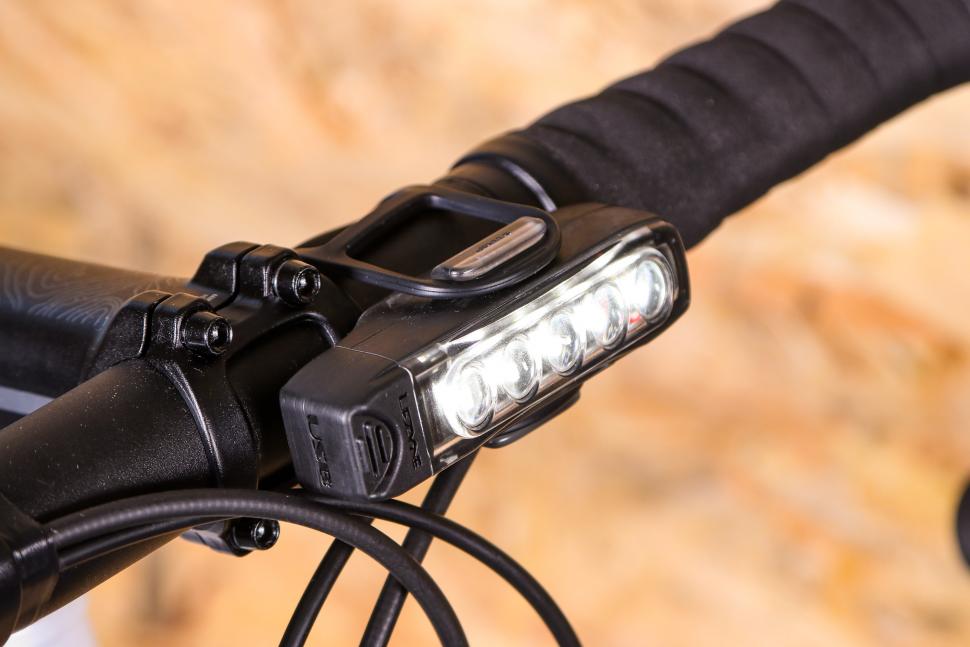

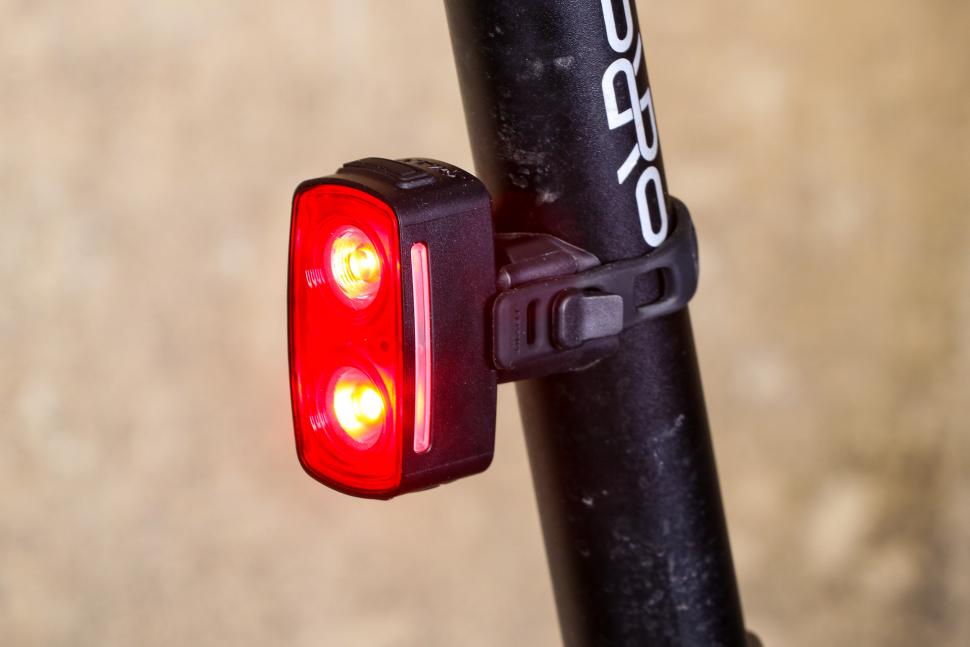

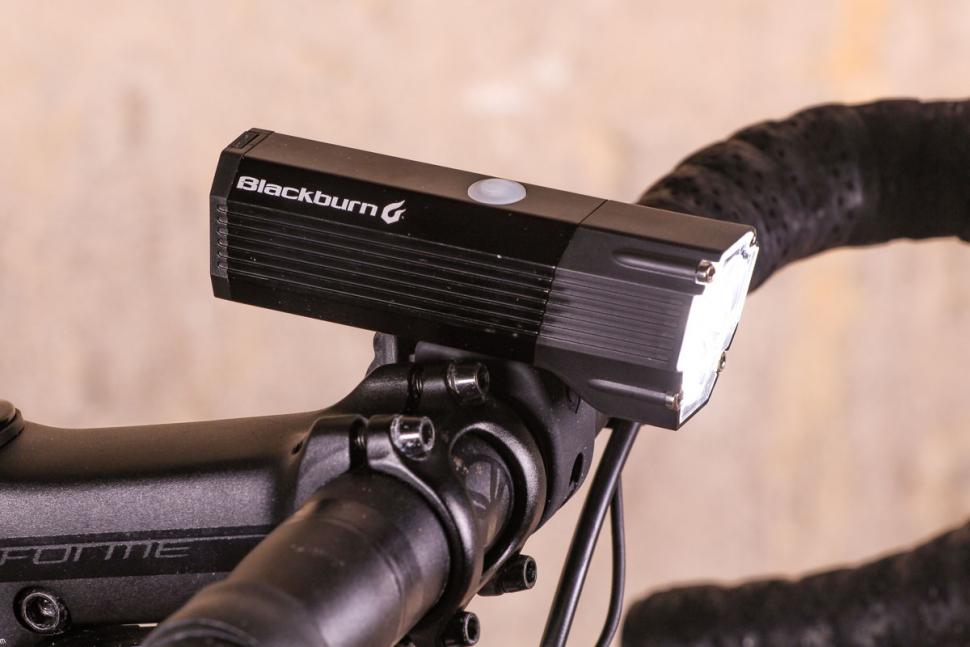
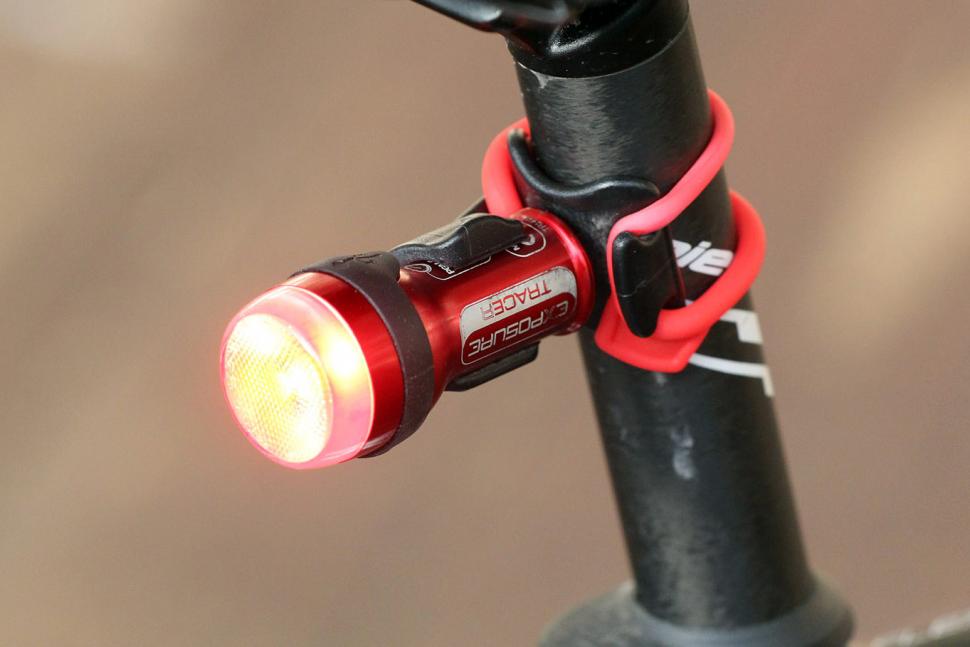

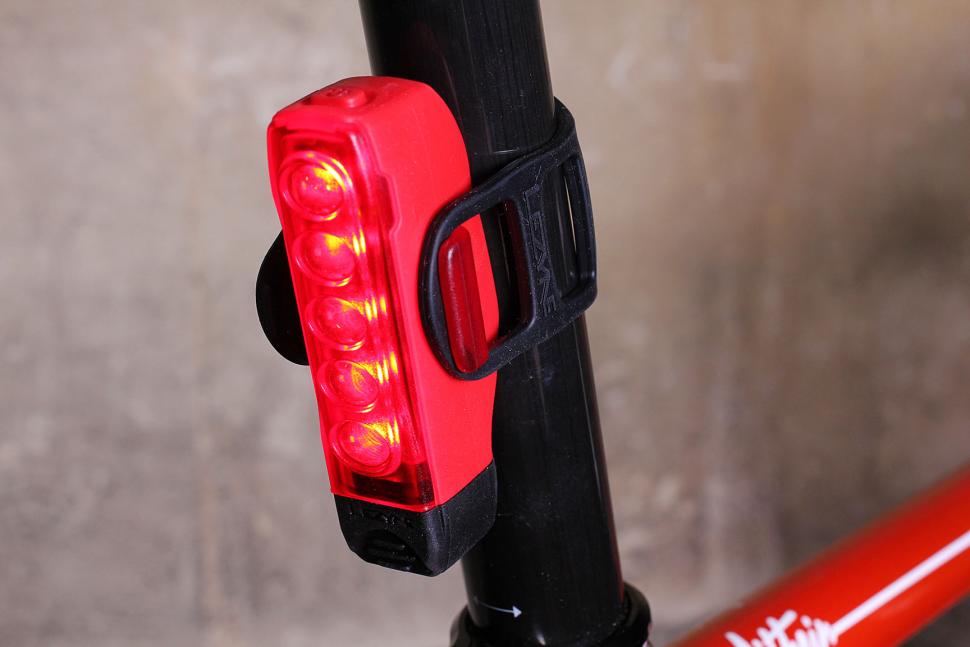
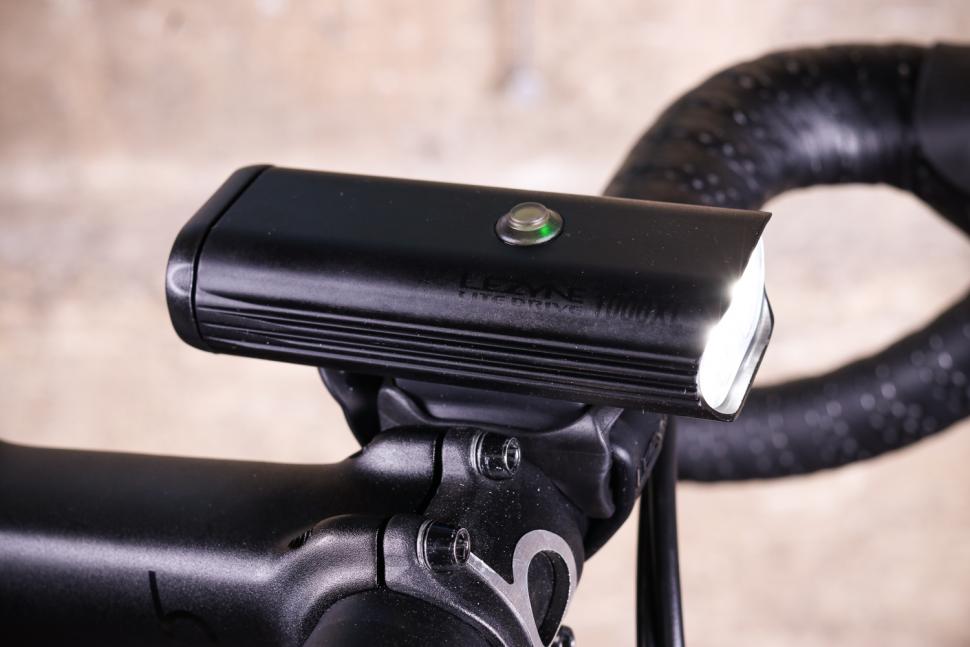
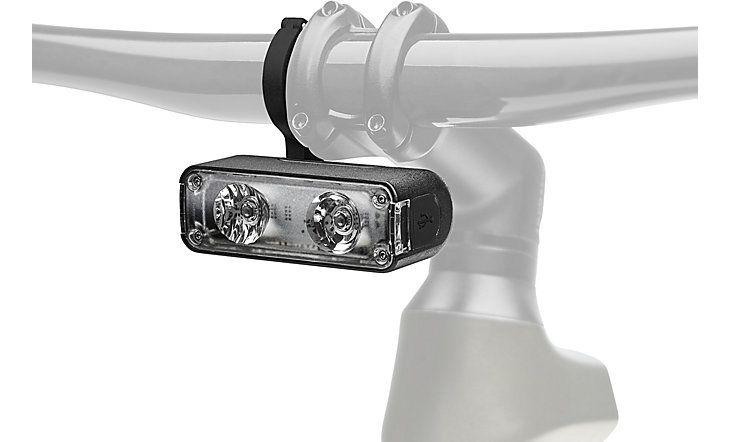
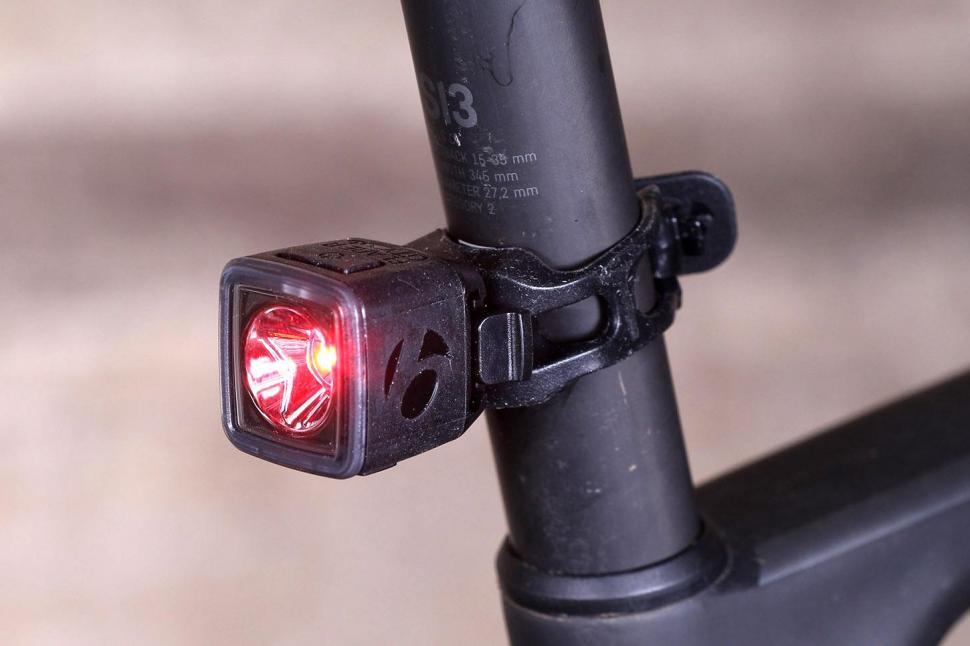
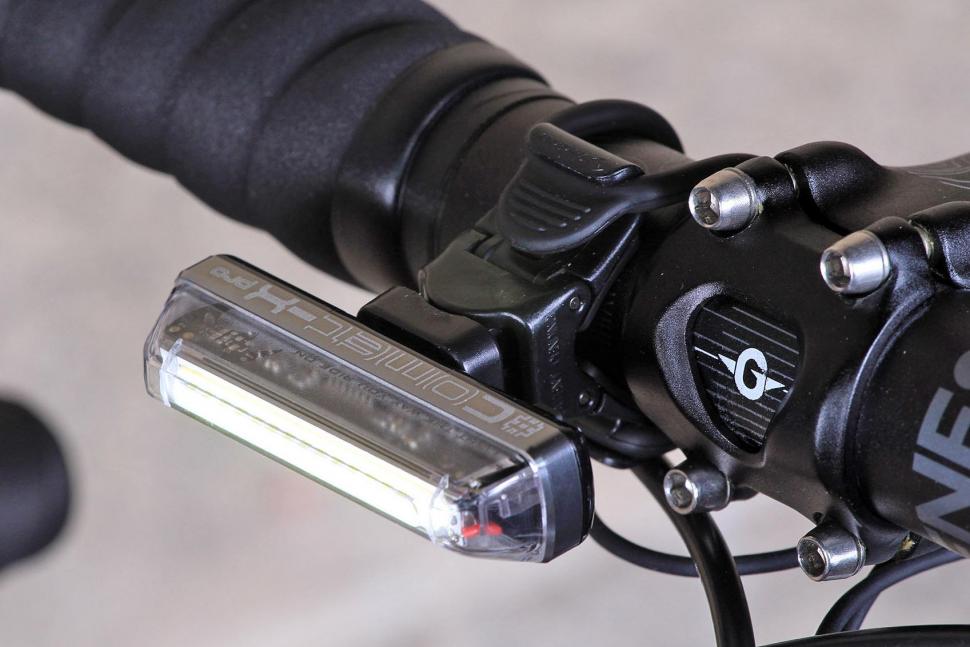
Add new comment
121 comments
I like to use my bicycle as a getway vehicle in bank robberies so I like to run without lights or hi-viz, but does it ever work?
I have these fantasies that people will say - he came out of nowhere and then vanished into thin air - but always someone with functioning stereoscopic vision eyeballs me and grasses me up to the dibble, regardless of the time of day!
Been riding road bikes for around 10 years and would never dream of going out at any time, Day or night with out flashing Front and Back lights. Anything to make sure that I am able to be seen by all and sundry.
No, cyclists should not use lights in the daytime.
How many things are driven past, succesfully, by drivers every day? Hundreds, thousands?
Few of these objects have lights on, yet they manage to avoid being hit, and if they are hit, it is the drivers fault. How can you blame an unlit tree for not being seen, then hit.
Trees, dogs, trash bins, pedestrians, parked cars, traffic signs, guardrails, and many others are avoided all the time, and they are not lit.
If you can't avoid a moving, probably light colored five to six foot tall object right in front of you, you need to stop driving.
This is another case of blaming the victim, by suggesting that cyclists are at fault because they are not fifty foot tall, dayglo wearing beacons of light.
Why don't drivers put down the phones, razors, eyeliner, tacos, vibrators and hamburgers and DRIVE?
I'm in the yes camp especially for the rear, but to be effective it must be very bright and flashing.
Why? Well, they are likely to be at least partially effective:
Cost wise, frankly if I could spend £1,000 on a device that I could move between bikes that stopped cars close passing and crashing into me, I would. The enjoyment of riding the bike without having to worry about motorists putting me in the ditch, or worse, would easily be worth the cost Di2 or some carbon wheels. Said wonder device doesn't exist yet, so in the meantime, I'll spend a lot less on lights and take the proportionately smaller improvement they offer instead.
Pointless exercise. Those drivers who are paying attention might notice you a couple of seconds earlier, those who are not paying attention still will not spot you. No malice involved on anyone's part, simply acting the same way day after day and usually without any consequences.
That said, I am a hypocrite because my Fly6 rear camera is flashing away and my dynamo hub rear light us always on and I rarely bother to turn the front light off either.
I am in Japan (Yokohama prefecture) at the moment and the number of utility cyclists rivals anything I have seen in the Netherlands. No helmets in sight, very few lights at night, kids front and back with Mum or Dad pedalling away while holding an umbrella etc. It's a relief to ride without all the faff I accepted as normal in London.
There are plenty serious athletes here as well. They head out on club runs dressed the same as I used to back home, helmet, sunglasses, team kit etc. Seeing them alongside the electric assist Mama Chariot users shows what a wonderfully broad church cycling is and how what applies to one group might not translate to all cyclists.
"It may not have escaped your attention that all new cars sold in the UK legally have to have daytime front lights."
This has escaped my notice. I guess that means that all new cars are driving around with lights permanently on. Apart from being an unnecessary waste of resources, I find this a dangerous trend: More and more cars will have their lights on during the day and more and more drivers will become accostomed to seeing other lit cars, meaning that they will become less likely to register unlit cars AND BIKES.
Once spring arrives with longer daylight hours, I enjoy the freedom from charging lights and buying batteries and I can tell myself that my bike is a good few hundred grams lighter when I leave my lights at home (even if I can't actually feel the difference). So, I am against running daytime lights! But, given the new law/trend, I can see a time when I shall probably use them.
'I'm able to make a rational choice - in this case a choice to make being hit as difficult as possible for a inattentive drivers - I'm running flashing lights all day long.'
a rational choice would involve running steady lights all day long. A fashion- or battery life-conscious one would go for the daft flashing ones. HTH.
Some great debate here. A few things I feel I can correct...
DRLs became LAW for all new cars and vans sold in the EU in 2011.
Trees and other unlit obstacles arent on the road and do get hit by drivers.
Drivers are generally not highly trained, it is possible to SMIDSY - most cyclsits are drivers and I have yet to meet anyone who didn't SMIDSY a cyclist at some point. Surprise, surprise cars also hit..... cars. No driver wants to hit anything. It's called an accident for a reason. No one is blaming cyclists or putting the emphasis on cyclists. It's just life, get over it.
Flashing lights work to grab attention, as said above, that's why the emergency services use them.
There is little downside to using high vis / helmets / lights - yes you have to buy and maintain them.
The studies and evidence is there and compelling - the links are in the article - read them!
Lights won't make you safe, but they sure as hell help. Should they be law? I don't think so. Should you use them? I do and I think most people should.
Motorists have the resonsibility to watch our for and see cyclists. Cyclists have the responsibiity to be make themselves easily seen as possible. My street has loads of them and I can't believe how many, especilly at dusk/night aren't runnionf lights.Bright clothing isn;t the answer but at least a rear running light is. They'll see you up to a half mile away. At, say 45 mph, boom! >> They're on you but they've seen that blinky. There 's no guarantee that some idiot won't hit you but it certainly lowers the odds. Like the gent with his motorcycle andnow his bike, I did the same. I use a front in urban situations and turn it on/oof in more rural settings. (Plug: I love my Blackburn Flea. About USD 30; no battery; very light. Comes with a USB and you recharge it on your computer)
Deep sigh,
Another pointless discussion.
If an individual wants to ride with daylight running lights, that's their choice just like helmets and high vis - not legal requirement.
Good luck if you think requiring these things by law is going to solve anything as I live in a student town where the kids just ride on the pavement at night because they don't have ANY lights. I went to the trouble of writing to my local MP many years ago asking why cheap bike lights are not legally required to be supplied with new bikes (like bells), he forwarded the question to the then minister for transport who replied that lights were required to be supplied with new bikes. I responded pointing out that the minister was wrong and subsequently received an apology from the minister - his name - Sadiq Khan! Did they change the law ? Nah, they didn't even consider changing the law!!!
The rozzers won't enforce it and the politicians don't even know the laws they are elected to make. therefore, this is another pointless discussion.
This is to be expected because as cyclists are making themselves less visible by wearing black clothing then we need something to get ourselves more visible again.
I personally refuse to become a blackshirt and wear everything bright I can.
The motorbike industry has shown us the folly of wearing black and have their headlights on constantly.
A message to the blackshirts, please use common sense and wear cycle clothing. As a motorist I'd rather see you sooner than later.
I have the Eposure Trace & TraceR. Both superb on the medium setting
I love this light with my garmin. The Garmin Varia Radar rear light lets me know if and how many cars etc behind. really good on quite roads as it letsd you know a car has cought you up many times befor you hear it. Also good if you are turning right. It gives me an idea when best to look over my sholder to check before pulling accross the road. I do use a front light as well. short rides fly12 long rides a big exposuer light.
No because I ride 100-300 or sometimes longer at a time. I don't want to carry 3kg worth of lights and batteries when I go out. This is more nonsense about putting the blame on people on their bikes than getting motorists to stop killing us.
No: because we don't want to train motorists just to look for lights rather than, you know, objects.
I use the Exposure Trace and TraceR for daytime rides. They are excelent and bright enough on the medium setting, giving around 12 hours between charges
The study in cited in the article seem a bit suspect. I can't wait for the first claim of, "they didn't have a light on so I couldn't see them" as a defense in an accident scenario. Cyclists need to ride responsibly and predictably and motorists need to take the time and care to ensure the way is clear for them to proceed. If you can't see an object as large as a person on a bicycle in your path then you should not be driving. Even at night there are so few areas where it is too dark to see a cyclist or pedestrian. Perhaps it's different in the UK than in N. America, but here most urban settings are lit up like alien landing strips.
I use then around town and in poor lighting conditions. I lso use them (perversely you might think) in bright sunshine - to highlight my presence when going under trees etc. where I might otherwise be hidden by the glare of the sun.
For awhile I did ride in the daytime with both front and rear lights, but I soon gave up on the front because people just drove as they did with the light on, and I was doing a better job of noticing them then them noticing me; but I always ride with my tail light strobing since the doctors removed my third eye that was in the back of my head...
I've been using lights at sunset, when sun's angle is low & can be blinding. Helps me to feel safe.
I tend to use my lights according to the conditions of the day. Riding into school at 7am under grey September skies, I put my front and rear lights into flashing mode, riding in at 7am on a July day under blazing sunshine I don't. Likewise, a couple of my longer, more scenic routes home have wooded sections, and I generally stop before those and put my lights on regardless of overhead conditions.
The problem I have with encouraging constant use of daytime running lights is it just gives drivers another excuse in an incident ... sorry, officer, I didn't see the cyclist I hit at lunchtime yesterday because he didn't have his lights on. Anything that makes it easier for the police and courts to blame the victim is a bad thing in my book.
Yes, I want to be as visible as I possibly can, but I have also been driving for over 30 years without ever hitting a cyclist so I am not convince that daytime lights under all circumstances is the way to go.
if you are going to use a daytime light make sure it is a front one (I do).
as this document says:
https://www.rospa.com/rospaweb/docs/advice-services/road-safety/cyclists/cycling-accidents-factsheet.pdf
“Almost two thirds of cyclists killed or seriously injured were involved in collisions at, or near, a road junction, with T-junctions being the most commonly involved”
No
Does anyone have a solution to fitting a rear light to a non-standard seatpost? I have TraceR rear lights but the bracket is designed for a round seatpost whereas my new bike has a post with a square back - the causes the light to work its way round until it's pointing sideways.
Advice/suggestions appreciated!
"So should we all start using daytime lights then?"
Short answer - "Sorry, but fuck off."
A wee bit longer an answer. So the most aggressively designed vehicles, appealing to the most aggressive drivers, increasingly have "get-the-f**k-out-of-my-fat-arsed-way" permanent lights ... and cyclists should go down that route? FFS.
Curb the aggression of Audi/BMW/Volvo drivers.
I've always found the issue with lights to be a little too narrowly focused (sorry) . My issue is with cyclists without any lights or such pathetic lights that are useless anyway..AND...people with poorly positioned lights or lights that are over bright even at night. Commuting in London by bike it is quite easy to be blinded by cycle lights pointing up into your eyes and with a brightness suitable for the darkest countryside. This for me is as much a problem as not having lights. Context and appropriateness seems to get lost in the race to have the 'brightest is best' .
Personally..... I tend to use lights at night or in poor lighting..... not day running lights...
Like hi viz and helmets, rear lights especially seem to give the green light to drivers that you are safe and so therefore they can take risks when passing you.
We as a group met for a ride last weekend and while pre ride faffing a guy on a black bike, with black castelli with no lights went past us, we passed pleasantries and we saw him easily as his silhouette showed up well against the light sky. If we could see him then why can't drivers?
I'm not saying don't use flashing lights during the day either, we used them last Saturday as it was low light and raining, if only cars were lit up ...
As for best lights.....it's like asking.... best tyres, chain lube, helmets, cycle kit... Take Care Out There #Respect
Personally..... I tend to use lights at night or in poor lighting..... not day running lights...
Like hi viz and helmets, rear lights especially seem to give the green light to drivers that you are safe and so therefore they can take risks when passing you.
We as a group met for a ride last weekend and while pre ride faffing a guy on a black bike, with black castelli with no lights went past us, we passed pleasantries and we saw him easily as his silhouette showed up well against the light sky. If we could see him then why can't drivers?
I'm not saying don't use flashing lights during the day either, we used them last Saturday as it was low light and raining, if only cars were lit up ...
As for best lights.....it's like asking.... best tyres, chain lube, helmets, cycle kit... Take Care Out There #Respect
Personally..... I tend to use lights at night or in poor lighting..... not day running lights...
Like hi viz and helmets, rear lights especially seem to give the green light to drivers that you are safe and so therefore they can take risks when passing you.
We as a group met for a ride last weekend and while pre ride faffing a guy on a black bike, with black castelli with no lights went past us, we passed pleasantries and we saw him easily as his silhouette showed up well against the light sky. If we could see him then why can't drivers?
I'm not saying don't use flashing lights during the day either, we used them last Saturday as it was low light and raining, if only cars were lit up ...
As for best lights.....it's like asking.... best tyres, chain lube, helmets, cycle kit... Take Care Out There #Respect
This article is over two years old and still gets dredged up every year at this time.
I think this bolg says everything you need to know about the subject: https://waronthemotorist.wordpress.com/tag/bollards/
Pages